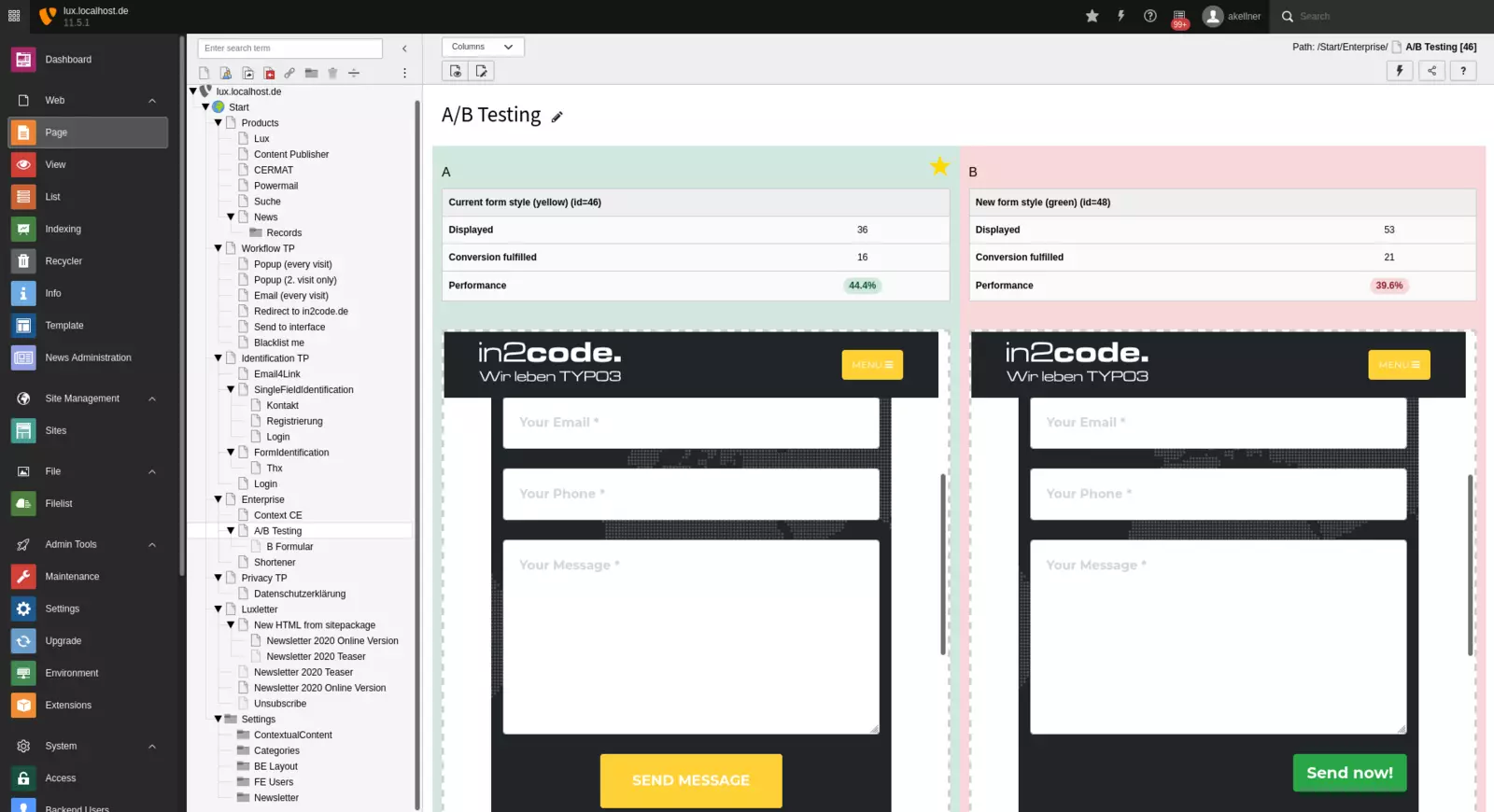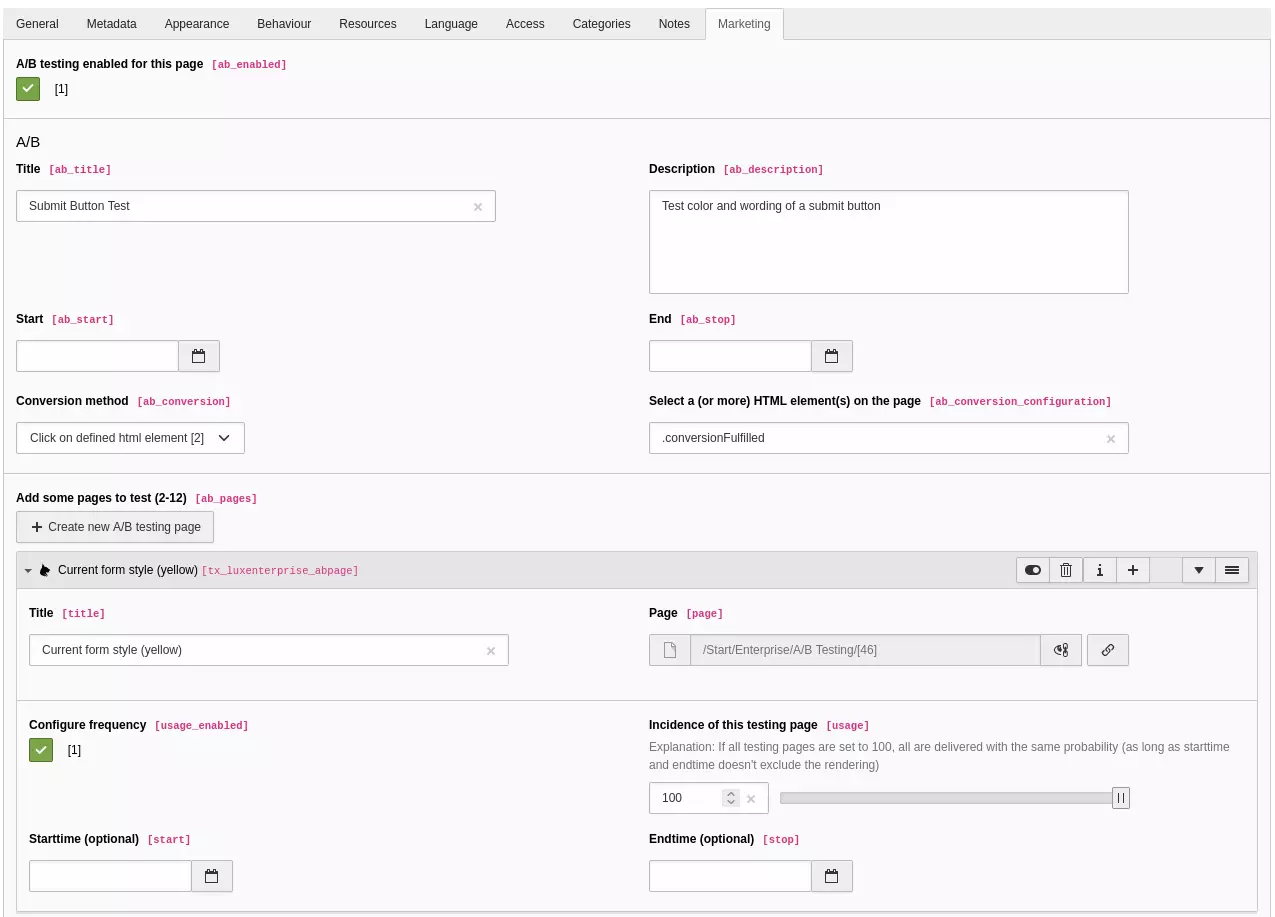What is A/B testing?

Did you know that underwear is bought more often on the Internet when it is presented to dark-haired women? There is certainly an in-depth, psychological explanation as to why this is so. In this post, however, we are not so interested in the why, but rather in the how.
What A/B testing is, is quick and easy to explain. By changing a small number of elements on a website, one would like to positively influence the conversion rate (i.e. the number of possible deals - e.g. by filling out a form).
A common discussion about this among UX designers is, for example, the position and color of the submit button below a form. Maybe green is better because - like the traffic lights at the intersection - it symbolizes the visitor that he is doing everything right? And does the button have to be at the bottom right - that is, in the western reading direction? Or shouldn't the button, like all other Call2Action elements on the website, be presented in the middle and in the colors of the CI?
So why not just offer visitors two variants of the landing page and let them compete against each other? Chance decides which lead gets to see which variant. Variant A is the yellow, center button and variant B is the founder, right-aligned button - the winning variant can then remain. This is A / B testing.
But images and, above all, text adjustments must also be tested in order to increase the conversion rate. Even entire web layouts could compete against each other. Often we think we know what our website visitor wants, but we are still surprised when we critically question our worldview. By consistently improving our content, a long-term increase in conversions of well over 100% is not uncommon.
Why A/B testing for TYPO3?

Websites based on TYPO3 are extremely powerful. A large number of page views or editors, multilingualism or multi-client capability are just a few of the USPs of this content management system. The price for this flexibility, however, often consists of the necessary individual programming, and this is more expensive than the "off-the-shelf garment", but in the end it also better suits our requirements.
If you look at this, it quickly becomes clear that TYPO3 websites have to generate direct or indirect sales. Otherwise, an ROI is difficult to achieve. So it stands to reason that the content needs to be optimized for conversions or lead generation. For example, one of our customers in the insurance industry only invests entire sprints in optimizing landing pages. The operation of an application process with a complicated form should be as simple and intuitive as possible - this increases the number of insurance contracts sustainably.
A/B testing in TYPO3 with LUX
With LUX and LUXenterprise we bring A/B tests directly into the TYPO3 backend. We want the editors to be able to find out in a playful way which content is the most performing. 2-12 variants can be delivered for a test. The winner is highlighted in color directly in the side view.
How the tests work in LUX
LUX makes it possible to make complete pages "A/B testable" within TYPO3. This means, for example, that an editor can copy a landing page and adapt it to his needs. The page properties of a page can be used to determine that A / B tests are active. This means that every visitor to this page will be presented with any page from this point on. Unless otherwise configured, chance now decides with the same probability which of the defined pages will be delivered. The visitor does not know that he is taking part in a test because the URL does not change.
If a new variant is to be tested first with a lower number of leads, the default probability of 100% can be reduced to any value. The time for individual variants can also be conveniently set.
The editor also decides when a conversion is completed. Just one click on a link or filling out any form on the page to be tested can lead to an increase in performance - i.e. the conversion rate. Clicking on individual HTML elements also results in a conversion, if that is desired.
Info: LUX fully supports the staticfilecache extension. This is how A / B testing works despite the use of the popular cache extension.






